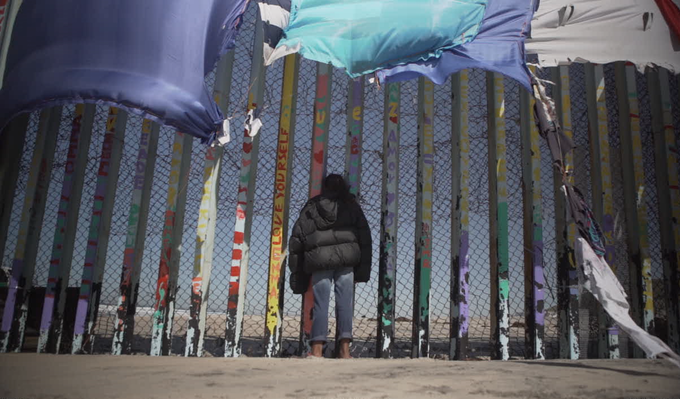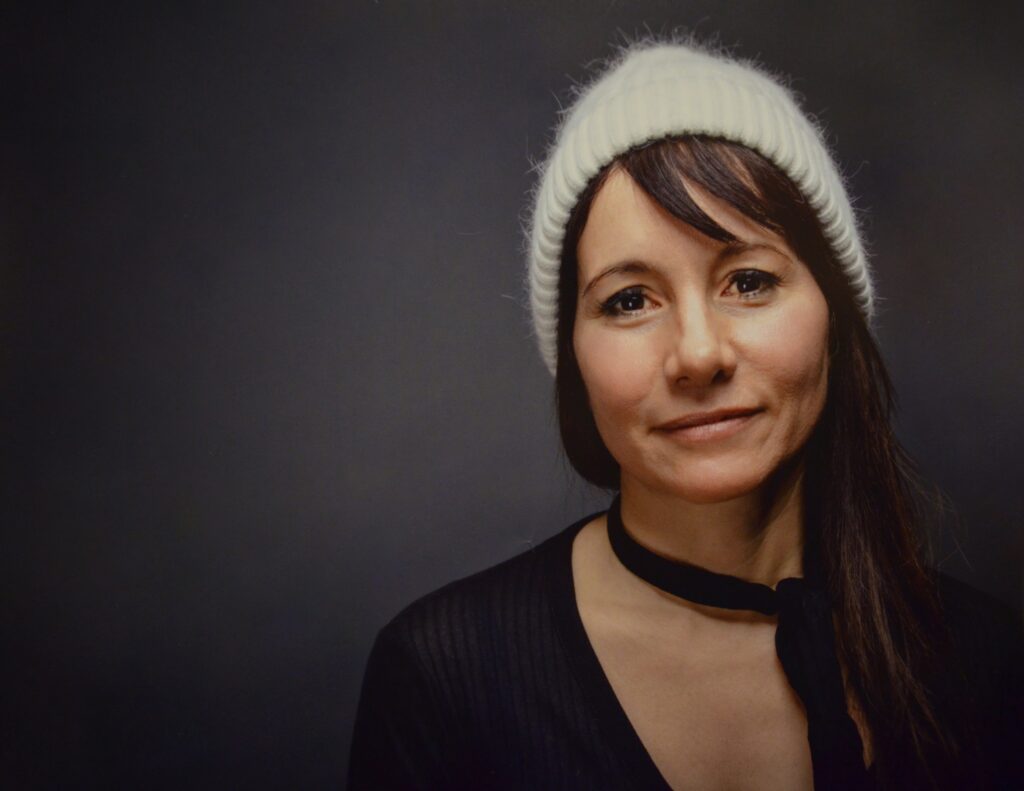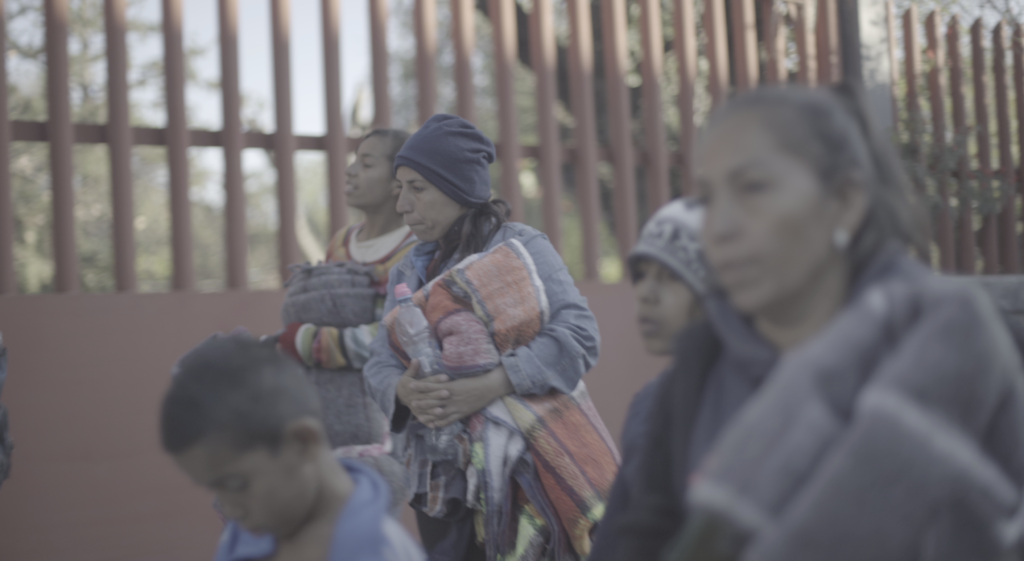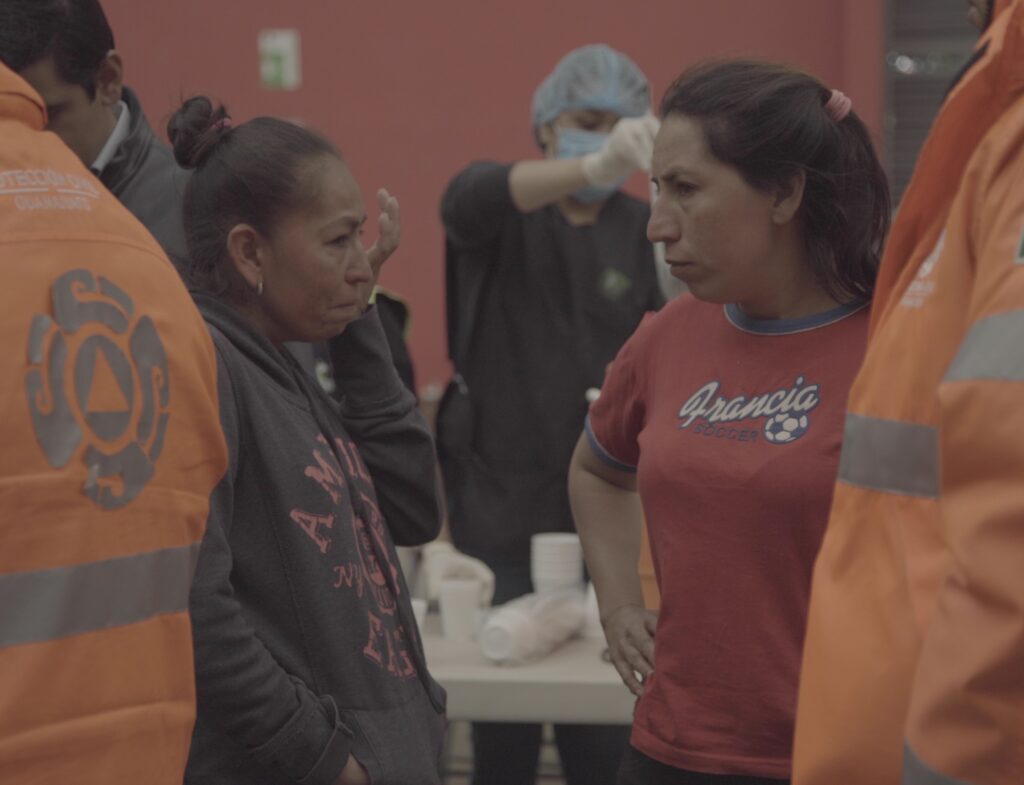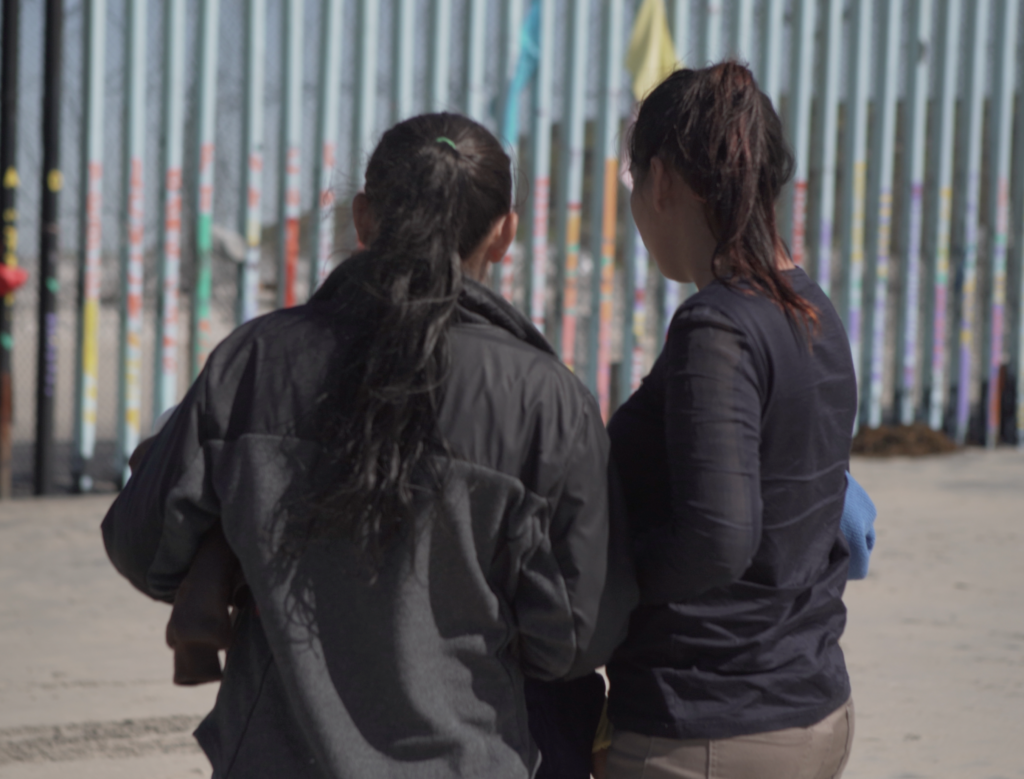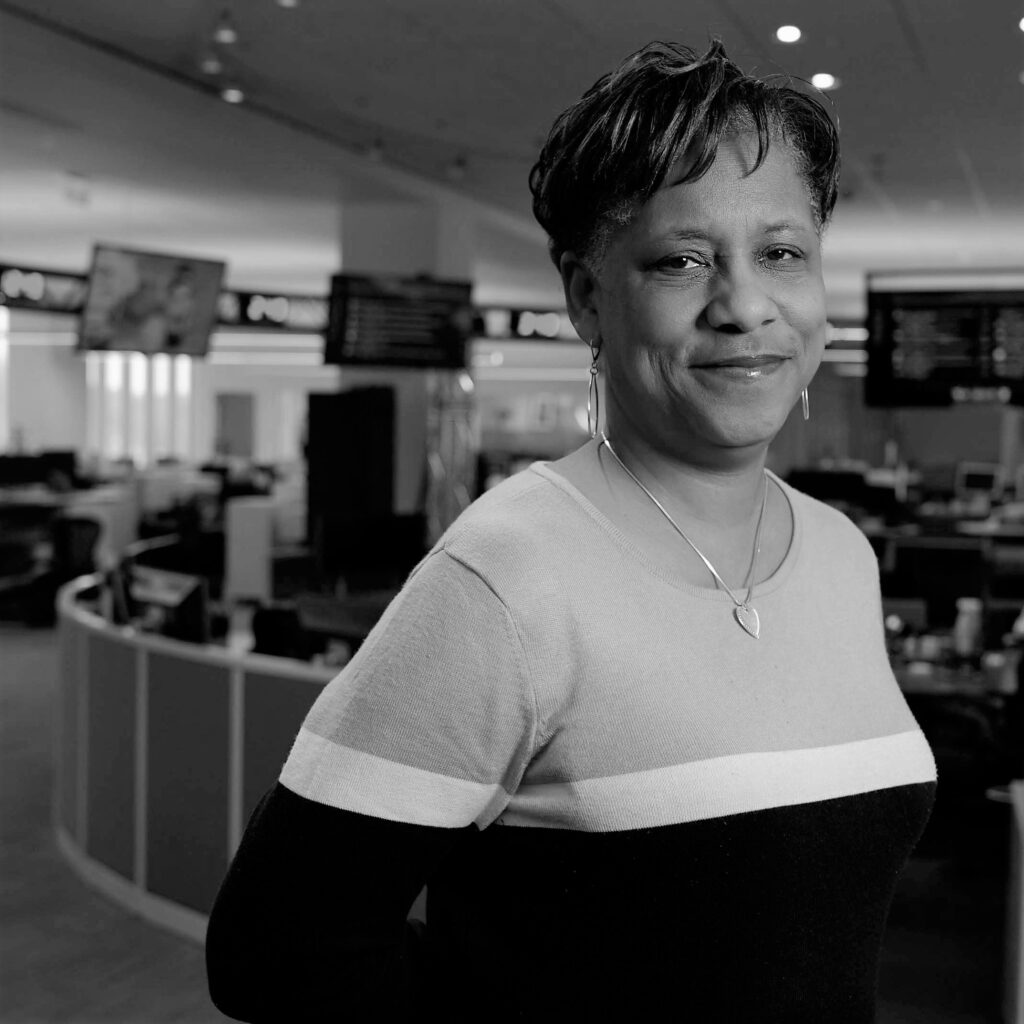
On this week’s 51%, we speak with some of the writers and filmmakers in the Carey Institute for Global Good’s Logan Nonfiction Program. Documentary filmmaker Ilse Fernandez previews her upcoming film, Exodus Stories. And we also speak with reporter Deborah Barfield Berry of the USA Today.
Guests: Ilse Fernandez, producer/director of Exodus Stories: Voices From the Caravan; Deborah Barfield Berry, national correspondent for USA Today
51% is a national production of WAMC Northeast Public Radio. Our producer is Jesse King, our executive producer is Dr. Alan Chartock, and our theme is “Lolita” by the Albany-based artist Girl Blue.
Follow Along
You’re listening to 51%, a WAMC production dedicated to women’s issues and experiences. Thanks for joining us, I’m Jesse King.
What goes into the media we consume every day? Well, I can only speak as a radio host, but even radio, if you’re doing it right, is harder than it sounds. Whether it’s journalism, filmmaking, podcasting, or photography — moving a project from that kernel of an idea to your eyes and ears is a lot of time and work.
Here in upstate New York, the Logan Nonfiction Program has been helping creators navigate that process in hopes of bringing important stories to the forefront. This fall’s class consists of 21 reporters, filmmakers, podcasters, and photojournalists across two sessions. While normally the program takes place at the 100-acre Carey Institute for Global Good in Rensselaerville, New York – a quiet refuge at the edge of the Catskills – its past few rounds have gone virtual for the coronavirus pandemic. Still, fellows swap advice on finding interviews, seeking funding, pitching to publishers, editing their work, and more.
The program has supported a number of big names and best-selling works on a wide range of issues. So I’d like to speak with some of this year’s women fellows about the projects they’re working on, and the issues important to them.
We’ll start with Ilse Fernandez, a documentary filmmaker and docu-series showrunner who has produced more than 200 hours of nonfiction storytelling for ABC, NBC, MTV, National Geographic, Netflix, and more. Since 2018, she’s been working on her upcoming documentary, Exodus Stories: Voices From the Caravan, following several immigrants who made their way to the U.S.-Mexico border as part of the “caravans” decried by then-President Donald Trump, in hopes of seeking asylum in the U.S.
Where did Exodus Stories get its start?
What drew me to this subject is that I am a Colombian-born U.S. immigrant. I felt a lot of parallels with some of the things that were happening in Central America, due to just the high levels of violence. Honduras and El Salvador have the highest murder rates in the entire world. At some point, Colombia was one of those countries. And so I understood just the insecurity, and the challenges that people face living under Narco terrorism, and corruption, and poverty. So you really have kind of the perfect storm of everything that could possibly go wrong in Central America — specifically, though, with Honduras, Nicaragua, El Salvador, Guatemala.
I think it’s a crisis that a lot of people don’t really know about, and it’s right in our backyard. And when these migrant caravans came together and headed toward the United States, they gained a lot of attention with Trump leveraging it as a motivator to create a wall. But what we didn’t really understand completely was the human side of this story, and why so many people were fleeing, and how they were using this caravan to gain international attention to some of the issues that were happening in their region.
Tell me a little bit about the people that you spoke with. And how did you meet them?
Well, I had been working with asylum seekers — I just got thrust into a situation where I knew somebody who’s undocumented, and they had their daughters at the border. And I started helping them out because he was undocumented, and he just didn’t know how to navigate the system. So because of that, I ended up learning everything about asylum, and living through it with this person’s daughter — including that she went to a detention center, where she was detained for about eight months. And I was one of the only people that was visiting her, because her father couldn’t go. So I went through getting legal help for her, and experiencing everything that asylum seekers had to contend with once they were in the United States. So that was part of the motivation. I did not focus on her story, I didn’t do her story. But what I did have is the skills of understanding who was getting asylum, who wasn’t getting asylum, and some of the issues related with it.
So when I heard this caravan was coming from Central America, I knew there was going to be a lot of asylum seekers and people trying to get some permanent status in the United States. I reached out to some of the people that were doing ground work with the immigrants, and so it was really through the people that were working with the communities that I was directed to different immigrants. And one of those immigrants ended up being a young man named Dennis, who was fleeing from Nicaragua because he was a student protester, and his father was, or is, a colonel in the Sandinista regime. So basically, not only was he going against his government, but he was also going against his father, who was somebody who was a visible person in that government. As I got to know him better, I just realized that this was also a complex character who had left his pregnant spouse behind, and the sacrifices that he made for partaking in the student uprising that happened in April 2018.
He was friends with a group of immigrants, because a lot of times what happens is that the immigrants form what they call “caravan families,” where they kind of act as a family: they’re living together, they’re trying to get food together. If somebody needs money to make a phone call, and they don’t have it, then they support each other. And so he had a young woman named Cindy — he said to me, “You know, you should really talk to her, because she has a really strong story.” And Cindy, I would say that she’s not somebody that would normally talk to cameras. So it was somebody who took a while to warm up to. Once I learned her backstory, she was coming from Honduras, and she came from extensive sexual abuse past. And so with her, I also saw this vehicle to be able to tell the story of all the femicide and all the gender-based violence that was happening in in Honduras.
I then realized that I really needed to capture the journey — because what I did with those two characters is I met them once they arrived in Tijuana, so that was at the tail end of their journey. And I realized that I needed to have some time with people that were actively in the caravan. I actually flew down to south of Mexico City and then started following the caravan there, and because I had befriended some of the organizers, they also kind of pointed me to some people. The last character, her name is Deisy. She was the person who was always smiling. She just was this really interesting character because she was so happy-go-lucky. She was this Honduran beautician, who was just, you know, the glass is always half full. And I thought that was a great complement to the heavier side of the other characters, that had these really heavy [stories] — you know, one’s a political story, and then one is a gender-based violence story. And so Deisy was coming from a fresh outlook of life, because she was using the caravan as a way to reconnect with her daughter that she had given up to her parents when she was born. She was a teen mom, and when she was 17, she had this daughter, Daniela, the daughter was raised with her parents. And so Daisy kind of uses this journey as a way to reclaim her daughter and reconnect with her. And her daughter’s an adolescent — as anyone with children knows, the adolescent years are a time of rebellion, and [Deisy] was the brunt of that rebellion. And so it’s really like a mother-daughter journey, coming to the United States under the guise of the caravan.
So you’re in Tijuana — what is the asylum process? What does that look like, and what are the odds of someone actually getting into the U.S.?
The process has been constantly changing, but the what the process was like in 2018 — November, specifically, of 2018 — was people would go to the “la garrita,” or “el chaparral.” They would go to this place where it’s a border crossing into the United States, and they would put their names on this unofficial list. You know, there would be this fold-out table and fold-out chairs. People would be taking the names of immigrants, they’d wait in this line, they put their names down, and then they would get a number, like a little handwritten note number, that would say like, “1532.” And so what people would have to do is come and check back in to see when their number was called. And then when their number was called, they had the opportunity to cross into the United States, where they would be processed with their asylum claim and have a “credible fear” interview. And then from there, you know, a number of different things would happen. If they pass the credible fear interview, and they were deemed that they had grounds for asylum, and they had children at the time — because before there was child separation — if they had children, most likely they would be admitted into the United States with an ankle bracelet. And then they would have to deal with different court dates, and finding lawyers and basically making their asylum claim. If they didn’t have children, then there was a stronger likelihood that they would end up going to a detention center, where they would undergo the same process, but inside a detention center, where the challenge is trying to get lawyers, because to make phone calls you need a calling card. And so in many ways, your chances of getting asylum once you were in a detention center was a lot more challenging, because of the aspect of getting a lawyer. And without a lawyer, your hope is pretty much out the window. Most people do not get asylum if they don’t have a lawyer.
If you don’t win asylum, what do they do? Can they try again?
No, they are deported. Often what happens is either you could outstay your welcome and then stay in the United States undocumented, which does happen, or you’re deported back to your country. And sometimes that’s the problem — for some people, being sent back to their country can be the risk of death. Particularly for one of my characters, that was a big fear. Right now, I think the deportations are less. Actually, to be honest, I don’t really know the current administration [and] how much they’re following through, but my sense is that it’s a little bit less than Trump.
That leads into one of my next questions, actually. So the film starts around 2018. How has the asylum process changed with the different administrations? Or is it any different now?
You know, that’s a great question. Now, one of the challenges is that because of COVID, we’re actually not admitting people into the United States quite the way that they did before. So they’re doing “Remain in Mexico,” which means that the claims are being processed in Mexico. The detention process [where] they come into the United States, and they’re examining their credible fear claim — it’s called “the icebox” or in Spanish “la hielera” — they no longer have that part because of COVID. So a lot of people, in essence, are staying in Mexico and doing their claim in Mexico, but the challenge is that there aren’t a lot of U.S. lawyers that are in Mexico —and particularly during the pandemic, a lot of them couldn’t even go. So some people use phone calls, and they would talk on the phone. But there was a big challenge with that. And I don’t know that much about it right now, because I haven’t been down there. But my understanding is that that was what was going on.
In essence, with the administrations, while some things have changed in terms of what the grounds are for asylum, the actual process of people coming into the United States has been changed because of COVID. And it’s still changed. So right now there’s a trickle, but it hasn’t been quite restored to what it used to be.
So as you’re talking with these people in these caravans, what is the general feeling about their odds of getting into the U.S.? There’s got to be some hope there, but at the same time, there’s a lot of waiting involved, too.
It’s a huge wait. Traveling from Central America by foot, or by hitching rides or whatever means, is basically like a month and a half / two-month journey. And then going to the border and waiting to try to get a claim, under normal circumstances, is another two months. And then with the icebox, generally speaking, that’s about a week to two weeks. And then if they go to a detention center, that could vary — but the average, I would say, is probably about seven months. So you’re looking at a year, sometimes, for people to be able to have their court dates or to be processed, I guess you could say. And that’s just processing, that doesn’t mean that they’re winning asylum. Right now, the courts are so backed up that for some of my immigrants, for example, they will not have their court dates for another, maybe two years? It can really vary by region. But because of that, then what happens is that people are in the country, and they’re trying to file for asylum so that they can get work visas, so that they can try to work legally. But that was also one of the things that was changed under Trump, they changed the timeframe of when you could claim [that], so some of the immigrants in my film, they still haven’t even been able to get those work permits. So it’s a very complex process. It’s very difficult because the laws were changing all the time. I mean, even lawyers that worked in immigration, they had a hard time following what was happening, because it was just under constant flux.
As you’re speaking with immigrants, and with people working on the ground, are you getting a sense of anything that might help? Because for those of us reading stories about the crisis at the border, it’s always depicted as a mess where there’s so many moving parts that it’s hard to untangle. Is there anything that you think could be done?
Right, that’s a really good and complicated question. One of the things that’s changed is that you have more women, children, families, and unaccompanied minors [at the border], and those are also really vulnerable populations to human trafficking, organ trafficking, gang recruitment…there’s all this negative that they’re dealing with. Even though they’ve left their countries, there are still other dangers — it doesn’t mean that, just because they’ve left, that suddenly they’re OK, and that things are fine staying at the border in Mexico. I think that programs like TPS are helpful. I think that there has to be some sort of amnesty. And I think that we have to look at what is causing the root causes of some of the issues that are happening in Central America, and see how we can fix the problems before they get out of hand, which is what’s happened now. Now, these are problems that are really out of hand. And you’ve had, also like last year — we had two hurricanes that hit Honduras and Nicaragua. So it’s really challenging problems of poverty and violence in our region, and I think that the problem is that we’ve kind of ignored it and pushed it under the rug, hoping that it would go away, and it’s just getting worse and worse.
You’re just wrapping up your time with the Logan nonfiction program? How far into this film are you? What advice do you have for others hoping to get into documentary or film work?
Well, you have to have a lot of tenacity. What’s challenging is raising funds and getting grants, and it’s incredibly competitive. I never realized the level of how competitive it was until somebody said to me that it’s harder to get a grant than it is to go to Harvard or to an Ivy League school. And then we looked at the percentages and it was correct. It has to be a subject that you’re willing to eat and breathe and live with every day. I’ve been doing this film for three years now, it’s really consumed all of my life. I’m currently in post production, and I’m still trying to raise funds to complete the film. The Logan fellowship was an incredible opportunity for me to connect with other filmmakers and get mentorship, and support, and guidance. You know, as a first time feature-film director/producer, I’m wearing two hats and it’s a lot, especially during a pandemic, where normally we would have the opportunity to in-person meet people at a film screening or at a conference. And so Logan was a wonderful way to kind of fill that gap and get that knowledge from other people as well as the support. I also ended up getting the IDA Logan Elevate Grant.
Ilse, thank you so much for taking the time to speak with me. Is there anything I’m missing that you’d like listeners to know?
I guess just with the film — my intention with this film was to see the human side of immigration. To enter the world of the immigrants and to see what they’re seeing, feel what they’re feeling, and experience all the challenges that they face. But then also see the remarkable resilience of people. When we went through COVID…I found myself being inspired by them. Because for them, they were like, “You know what? COVID, it’s all gonna work out. You know, this is going to be hard right now, but we’ve faced harder things and we’re going to be OK.” In many ways we forget what immigrants add to our country, and they’re beacons of positivity in many ways. And I think that that’s something that, for me during COVID, I found remarkably inspiring. And I think that’s what we’ve forgotten as a country: the energy and the hope that immigrants bring.
While some of this fall’s Logan fellows are already knee-deep in their projects, others are using the workshops to get their ideas off the ground. Deborah Barfield Berry is a national correspondent for USA Today based in Washington D.C. For the past 20 years she’s monitored the never-ending political battles in Congress and across the country, with a particular focus on civil rights and voting rights. As a Logan fellow, she’s in the early stages of a book on South Carolina Rep. James Clyburn, the current majority whip in the Democrat-controlled house. He’s the highest-ranking African American in Congress with a particular knack for bringing in votes. Berry says she’s followed him extensively over the course of her career — sometimes quite literally, on the campaign trail.
Why write the book? What role has Rep. Clyburn played in the past few years?
While he definitely played a key role, or is accredited with playing a key role, in Biden’s comeback, if you will. Last year, Biden’s campaign was considered to be struggling a little bit, especially going into some of the primaries — South Carolina being a key primary, especially for a Democrat. Everybody comes courting Rep. Clyburn because he has so much clout and influence in South Carolina. And it was days before [the primary] when Clyburn came out and endorsed Biden, which many credit with helping boost Biden’s campaign. From there, it moved on, he kind of dominated a lot of the south and went on to win the election. He’s played a key role in getting some Cabinet members in position. He’s also played a key role and helping push through some of the legislation. He is the whip, which means he’s courting folks to vote. And clearly that’s worked in these cases. And he’s pushing hard on funding for HBCUs, pushing hard for voting rights, pushing hard on criminal justice reform, all key democratic issues.
Why is it that he has the pull that he has, do you think?
I think what I’ve heard from some people — especially as I’ve followed him a few times on the campaign trail, and I don’t know that it’s just for Black or African American audiences, but that tends to be where I’ve been with him — he seems to appeal to African Americans and Blacks. He kind of just talks to talk. He comes across as a straight shooter. He will criticize when he needs to, including Biden, and other folks in administration. So it’s not like he’s just drinking the Kool Aid, if you will. He will say what he needs to say. He’s very passionate about the issues he cares about. He’s a walking history book, he taught history. Straight shooter, that’s probably the best way I think he comes across, and what I’ve heard others say. And they appreciate that.
You mentioned some of the causes that Clyburn has been passionate about. What do you see as some of the key issues for Democrats in the next few years?
Well, let me just back up and say, I don’t know that many people know as much about his history as a civil rights activist. In his 60s, he was marching with many of the others, especially in South Carolina. He played a key role in the Student Nonviolent Coordinating Committee and other groups down south. He has a background in civil rights. That said, one of the major issues he’s always pushed for is programs to help poverty, address poverty. He continues to push hard on funding and support for Black colleges and universities. One of the issues he’s definitely been out front on is voting rights. He’s been a big advocate and pushing hard for support for some voting rights bills, including the John Lewis Voting Advancement Act. John Lewis happened to be one of his close friends, so there’s no doubt that he’ll be pushing hard on that going forward.
Looking ahead to the midterms in 2022, what does that political playing field look like? Because we just had elections earlier this month, some of which didn’t pan out for Democrats. And it’s been discussed as a signal for what might happen in 2022.
So I’m not gonna play like I’m a political analyst, I am a journalist. But I think a lot of Democrats are worried about how the landscape looks for Democrats. They’re barely in the majority as it is. What I can say about representative Clyburn in the past, and I’ve covered him for years in different ways, is that he’s often been called in on these midterm races to swoop in and help a candidate. And I think the last cycle or the cycle before, he was particularly called in for the competitive races, the ones where the edge are really close. They call him in to kind of troubleshoot. He’s 81 now. You know, we’re still in that pandemic, as much as we may not, you know, always act like it — we still are. So people were still pretty cautious about what they do there. And last year, he wasn’t out as much early on, being an 80-year-old Black man in the pandemic. He was particularly vulnerable. But he did step out that November to campaign for Biden. And I haven’t talked to him recently, to see whether he’s plans to be as active next year. But if this year is any sign of it, he jumped into a race earlier this year in Ohio, and the candidate that he supported won. They’re going to look for him to do much of the same next year.
As a reporter, you particularly focused on issues like civil and voting rights. How has the conversation and reporting around those issues changed over the course of your career? Or if it hasn’t changed, how has it stayed the same?
So 20 years I’ve been talking about voting rights and civil rights….it’s changed somewhat? I’m working on the voting rights story now. I was talking to a couple of advocates, and we were talking about how in 2006 I remember standing on the steps, outside the Capitol. And all these lawmakers, Republicans and Democrats, had just voted for the reauthorization of the 1965 Voting Rights Act. [It was] bipartisan, almost all of them voted for it. Everybody’s clapping, and it’s a big moment. That was 2006. Now they can’t get a bill out of the Senate. It’s almost like, when did voting rights become a partisan issue? It’s amazing to watch how things have changed. That says a lot about where we are, I think. Especially for the advocates, but for me, who’s supposed to be covering from the outside, to watch how it’s changed, and even writing about states that are adopting measures that may be considered more restrictive — that’s a lot different than when I was writing about the Help America Vote Act, where they were putting more money into into voting, where they were making it easier to vote, where they were offering early voting, and Souls to the Polls. All those programs are now changing, or being proposed to change. That’s a big difference.
I’m also working on a civil rights project, and it’s based on pivotal moments in 1961, where civil rights activists, a lot of them were fighting for voting rights and trying to get Blacks registered to vote, trying to get them to the polls, access to the polls, etc. What’s really been disheartening is, when I’m talking to these veterans who are now at 80/90-years-old, how frustrated and disappointed they are, that 60 years later, we’re still talking about voting rights, that there’s still a fight over voting rights.
What do you see as some of the biggest issues in your field?
I think the lack of diversity. Not only in print, but in broadcast radio, all with the lack of diversity. That’s not a new problem, but I think there’s much more acknowledgement of that problem. Lack of diversity sometimes means not writing some stories that are important to a particular community, not recognizing what might be a story to a particular community, not having different voices at the table to make those decisions, deciding where those stories go even if they’re done. And with the changing demographics. I think our industry is not doing itself justice, and our readers an injustice, if we don’t do a better job of diversity. I also think our industry in general, especially print, is in a pretty scary place. We got to get our readers, we’ve got to keep them in, and we have to do a better job of offering something that they want to pay for.
Do you have any advice for any aspiring journalists?
I’m on the board of the Washington Press Club Foundation, and part of our mission is to help young people get into the business and support them, as well as to push for diversity. So we have these webinars where we offer up suggestions and advice and different panels. One of the things we all have been encouraged to do is go for internships, to look for internships, to work at your local newspapers, too, if you can. To work for your school newspaper, to get a feel for what it is. I will definitely say you need to be passionate about it. If you want to develop a niche, if you will, or a specialty, if that helps — but definitely do a little bit of everything, so you get a sense of what you like to do, what you’re passionate about. Don’t be afraid to go to a smaller market to learn the skill, to practice the skill, to figure out what works and what doesn’t work. But if you’d like doing this, if you feel like you can — as all of us started off early — “change the world,” there probably are ways that you can change the world, even if it’s in your community.
Thank you for listening to this week’s 51%, 51% is a national production of WAMC Northeast Public Radio. It’s produced by me, Jesse King. Our executive producer is Dr. Alan Chartock, and our theme is “Lolita” by the Albany-based artist Girl Blue. A big thanks to the folks with the Logan Nonfiction Program, Ilse Fernandez and Deborah Barfield Berry for taking the time to speak with me. You can learn more about the program at logannonfiction.org, and you can learn more about our guests and what they’re working on at wamcpodcasts.org. We’ll continue with some more of the Logan fellows next week — but until then, I’m Jesse King for 51%.
